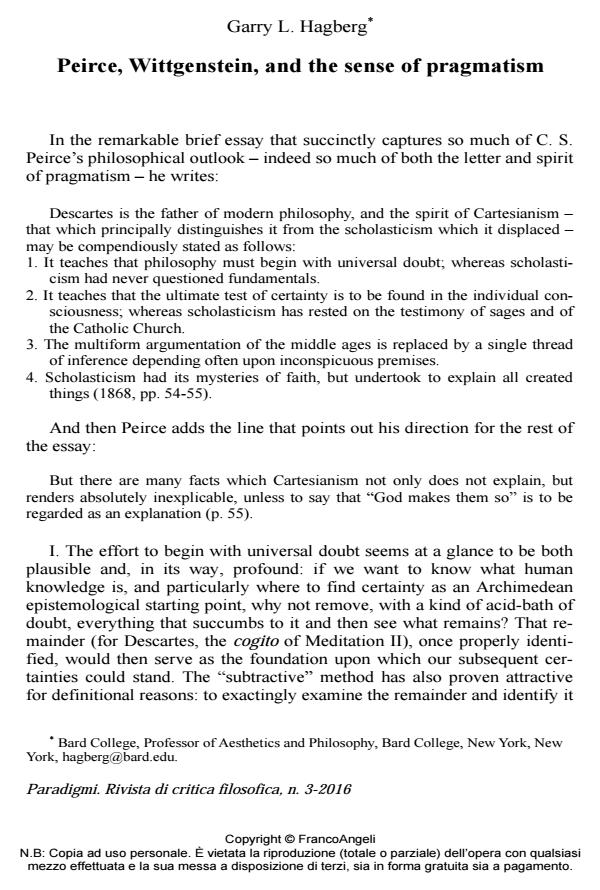Peirce, Wittgenstein, and the sense of pragmatism
Journal title PARADIGMI
Author/s Garry L. Hagberg
Publishing Year 2017 Issue 2016/3
Language English Pages 18 P. 33-50 File size 203 KB
DOI 10.3280/PARA2016-003003
DOI is like a bar code for intellectual property: to have more infomation
click here
Below, you can see the article first page
If you want to buy this article in PDF format, you can do it, following the instructions to buy download credits

FrancoAngeli is member of Publishers International Linking Association, Inc (PILA), a not-for-profit association which run the CrossRef service enabling links to and from online scholarly content.
This article (1) examines Peirce’s development of the themes of doubt, belief, the methodological problem with posited counterfactuals, and his critique of the picture of the Cartesian interior and its implications for linguistic meaning; (2) reconsiders Wittgenstein’s remarks concerning the Cartesian picture and the corresponding image of mental privacy, the very idea of the use of signs as the encoding of thought, and his interrelated observations on the natures of belief, doubt, and linguistic meaning; and (3) briefly considers the significance of these matters for some fundamental questions in aesthetics and the clarification of our understanding of a work of art.
Keywords: Wittgenstein, Peirce, Pragmatism, Doubt, Aesthetics
Garry L. Hagberg, Peirce, Wittgenstein, and the sense of pragmatism in "PARADIGMI" 3/2016, pp 33-50, DOI: 10.3280/PARA2016-003003